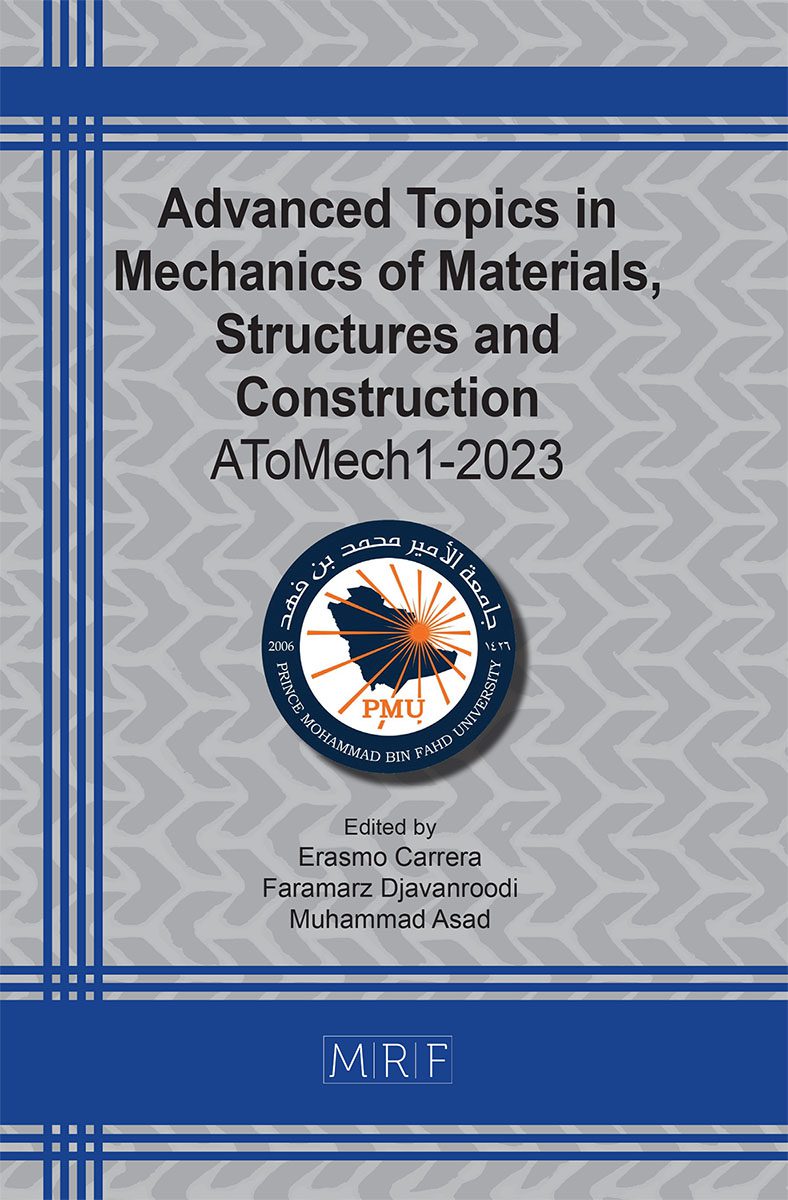Tensor as a tool in engineering analysis
A.P. Akinola, A.S. Borokinni, O.O. Fadodun
download PDFAbstract. This paper underscores the potency of the invariant character of tensor and its derivative concepts and accentuate the synergy between isotropic tensor and other tensors and the corresponding vector operations. The equivalence of covariant derivative in a curvilinear coordinates system embedded with a non-constant vector field and the partial derivative in an affine coordinates system ingrained with a constant vector field is interrogated. The corresponding role of the Christofell symbols as the affine connector of vectors with their derivatives in a variable field are compared to the Frenet-Seret skew-matrix connecting the trihedrons (i.e. tangent, normal and binormal) of a moving space curve with their derivatives. The nexus of the Christofell symbols with the geodesics is also shown. The structure of the metric tensor and the Levi-Chivita skew-symmetric tensor , as isotropic tensor rank-2 and rank-3 respectively is highlighted, such that the usual operations of dot product (or scalar product or inner product) and cross product or (vector product or spin/rotation operation}) are now expressed through the isotropic tensors. Recalling the theory of exterior differential form and invoking the Poincare’s theorem we show the application of the exterior product in establishing exact differential (or total differential) in calculus in relation to plane problem of Elasticity. The invariant nature of the tensor objects and operations therefrom are then copiously invoked and deployed to establish constitutive relation for materials: in finite elasticity, within the context of hyperelasticity; composites, where there is a trade-off between heterogeneity and anisotropy through homogenisation process whereby differential equations with variable coefficients are converted to differential equations with constant coefficients; and plasticity, where application of tensor is exhibited with strain gradient plasticity, and shown how the concepts provide balance of microscopic forces, balance of macroscopic forces, and plastic flow laws as concise mathematical equations.
Keywords
Invariants, Christofell Symbols, Exterior Differential Forms, Hyperelasticity, Strain Gradient Plasticity
Published online 8/10/2023, 15 pages
Copyright © 2023 by the author(s)
Published under license by Materials Research Forum LLC., Millersville PA, USA
Citation: A.P. Akinola, A.S. Borokinni, O.O. Fadodun, Tensor as a tool in engineering analysis, Materials Research Proceedings, Vol. 31, pp 422-436, 2023
DOI: https://doi.org/10.21741/9781644902592-44
The article was published as article 44 of the book Advanced Topics in Mechanics of Materials, Structures and Construction
![]() Content from this work may be used under the terms of the Creative Commons Attribution 3.0 license. Any further distribution of this work must maintain attribution to the author(s) and the title of the work, journal citation and DOI.
Content from this work may be used under the terms of the Creative Commons Attribution 3.0 license. Any further distribution of this work must maintain attribution to the author(s) and the title of the work, journal citation and DOI.
References
[1] I.S. Sokolnikoff, Tensor Analysis with Application to Geometry and the Mechanics of Continua. John Wiley and Son, Inc. (1964) New York.
[2] L. Brillouin, Tensors in Mechanics and Elasticity. Paris, Masson (1964).
[3] V.W. Eduardo, Notes on Continuum Mechanics. Springer Publishers (2013).
[4] R. Ogden, Application of Nonlinear Elasticity to Soft Tissue Biomechanics. 24th International Congress of Theoretical and Applied Mechanics (ICTAM2016), (2016) Montreal, Canada.
[5] A. Akinola, B. Olokuntoye, A. Borokinni, O. Fadodun, O. Layeni, Effective teaching of vector to mitigate tensor-phobia in mechanics and application of exterior form. Proceeding of the 25th International Congress of Theoretical and Applied Mechanics (2021).
[6] C.A Truesdell, The Mechanical Foundation of Elasticity and Fluid Dynamics International Science Review Series Vol III, Gordon and Breach Science Publishers, (1966) New York.
[7] A.A. Ilyushin Mechanics of Continuum Mechanics. Moscow State University Press, (1978) Moscow. (2nd Ed. in Russian).
[8] G.A. Maugin, Continuum Mechanics through the Ages – From the Renaissance to the Twentieth Century. From Hydraulic to Plasticity, Solid Mechanic and Applications, (2016) Vol. 223. Springer International Publishing, Switzerland. https://doi.org/10.1007/978-3-319-26593-3
[9] Y.A. Amenzade, Theory of Elasticity. Mir. Publishers, (1979) Moscow.
[10] A.I. Lurie, Nonlinear Theory of Elasticity. Nauka Publishers, (1980) Moscow. (in Russian).
[11] D. Bachman, A Geometric Approach to Differential Forms, Birkhauser (2006).
[12] A.E. Green, W. Zerna, Theoretical Elasticity, Oxford University Press, (1968) London.
[13] E. Sanchez-Palencia, Non-homogeneous media and vibration theory. Springer-Verlag (1980).
[14] N.S. Bakhvalov, Averaging of partial differential equations with oscillating coefficients. Doklad Akademik Nauk, USSR, (1975) Vol. 225, No 2, pp245-252.
[15] B.E. Pobedria, Mechanics of Composite Materials. Moscow State University Publishers, Moscow (1984). (in Russian).
[16] A.P. Akinola, A.S. Borokinni, O.P. Layeni, A theory of strain-gradient-divergence plasticity. Proceeding of the 24th International Congress of Theoretical and Applied Mechanics (2016).
[17] M.E. Gurtin, L. Anand, A theory of strain gradient plasticity for istropic, plastically irrotational materials. Part I: Small deformations. J. Mech. Phys. Solids (2005) 53: 1624-1649. https://doi.org/10.1016/j.jmps.2004.12.008
[18] J. Milnor, Towards the Poincare Conjecture and the Classification of 3-manifolds. Notices of the American Mathematical Society, (2003) 50, no. 10, pp1226-1233.
[19] A. Akinola On Interacting Longitudinal-Shear Waves in Large Elastic Deformation of a Composite Laminate. International Journal of Nonlinear Mechanics, (1999) 34, pp405-414. https://doi.org/10.1016/S0020-7462(98)00019-5
[20] A. Akinola, On Complex Potentials for Finite Plane Deformation of a Transversely Isotropic Material. Mechanic Research Communication (MRC), (2005) 32, pp99-114. https://doi.org/10.1016/j.mechrescom.2004.04.006












